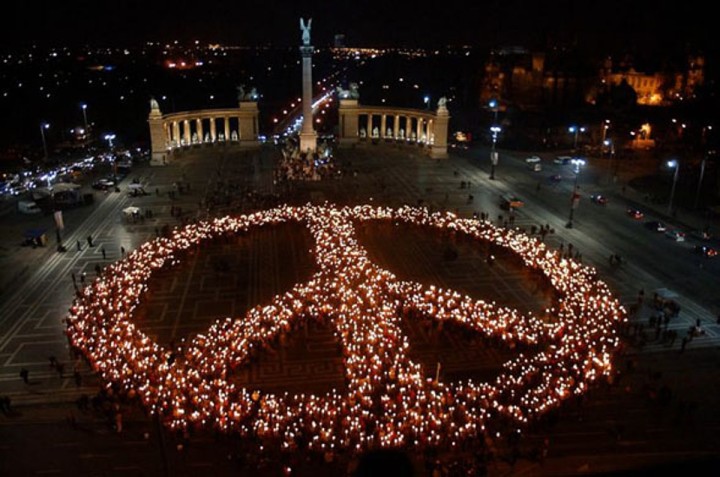Peace is a necessary condition for global realization of the right to health.
Our paper, The Right to Life in Peace: An Essential Condition for Realizing the Right to Health published in June 2015 by the Health and Human Rights Journal discusses an international movement toward elaborating the “right to peace” by the Human Rights Council (HRC) of the United Nations in Geneva. The initiative has had broad global support.
However, formulating the human longing for peace into specific words that define peace and its necessary conditions has not yet been successful in reaching consensus. While there are many commonalities that have emerged in dialogue, differences still remain.
As we move forward in trying to reach consensus on the right to peace, it is worthwhile considering how to develop a shared meaning across nations and cultures and the role that health providers can play in this process.
 The philosopher Edmund Husserl described “empathy” as a cognitive “experience of someone else”. Such experience occurs when we direct our consciousness towards the horizon of the Other. We see from their perspective, converting a “there” into a “here”.
The philosopher Edmund Husserl described “empathy” as a cognitive “experience of someone else”. Such experience occurs when we direct our consciousness towards the horizon of the Other. We see from their perspective, converting a “there” into a “here”.
In The Right to Life in Peace we discuss the need for not only legal instruments but for a full global transformation in order to realize a culture of peace.
We in health care have an important role to play in that transformation. We who seek to understand and heal through empathy can bring forth the voice of the Other so that the meaning of suffering wrought by war and violence is more deeply shared. We can open the door to a global dialogue in which meaning is revealed and honored. Only through dialogue and the sharing of consciousness will the many meanings of peace become one.
Since the article’s publication, there have been important advancements and reflections on the right to peace within the HRC.
- The mandate of the Open-Ended Working Group (OEWG) is: “…progressively negotiating a draft UN Declaration on the right to peace on the basis of the draft submitted by the Advisory Committee, and without prejudging relevant past, present and future views and proposals”. The latter part of the sentence opens the possibility to change it with new ideas and formulations.
- The OEWG witnessed in its first session that the text presented by the Advisory Committee was not supported by a number of Member States, even by those countries that actively support the process within the HRC.
- The international community should progressively elaborate the notion of the right to peace in light of the success of Declarations already adopted by the General Assembly, such as the Vienna Declaration and Programme of Action and the Programme of Action on a Culture of Peace.
- Although originally the Declaration on the Right of Peoples to Peace of 1984 lacked a human rights perspective, the HRC has elaborated this perspective since 2008.
- In international law there are different approaches on the right to peace. Although there are some similarities, from a legal viewpoint it is not the same to state the “human” right to peace and the right of “peoples” to peace as recognised in 1984 or even the right to life in peace (Declaration on the Preparation of Societies for Life in Peace: Art. 1), regional interpretations including for the Middle East (the right to live in peace –Security Council resolution 242), Southeast Asia (the right to enjoy peace – ASEAN Human Rights Declaration: Art. 38) or Africa (the right of peoples to peace and security – African Charter on Peoples and Human Rights: Art. 23). In the process of reaching shared meaning it is critical that we pay attention to language.
- In the debate on the right to peace held on 25-26 June 2015, most delegations, which took the floor, supported the work of the OEWG.
- Despite the different positions about the existence of the right to peace, all member States, even those which do not recognize it, agreed to recall the 1984 Declaration on the right of peoples to peace in the preambular paragraph 4 of the new text.
- While some civil society organizations advocated for different language in the revised text, not all are disappointed with the process. Some of them proposed language to bridge the gap among all missions with their proposals and work.
- Some organizations have proposed abandoning the goal of consensus. It should be stressed that consensus is a clear demand claimed by countries, regional and political groups, entities of the United Nations and a large number of civil society organizations.
In sum, advancing peace within the international legal system is a progressive process achieved through dialogue and building consensus on language and meaning. But full meaning is only realized when the words are put into action in human living and culture. Healthcare providers put words into actions of caring every day. But that caring is jeopardized as long as war continues to wound and to kill. We conclude with words from our text: “Health care professionals can and must play an active role in helping the human community to both affirm the right to life in peace as well as realize the fulfillment of that right by contributing to a worldwide culture of peace.”
Donna J. Perry, PhD, RN, Assistant Professor at the University of Massachusetts, Worcester Graduate School of Nursing and Vice Chair of the Board of the Center for Nonviolent Solutions in Worcester, MA (USA)
Christian Guillermet Fernández, Chairperson-Rapporteur of the Open Ended Working Group on the Right to Peace and Vice-Director General for Foreign Policy at the Ministry of Foreign Affairs of Costa Rica
David Fernández Puyana, MA, LLM, PhD (European Mention), legal assistant of the Chairperson-Rapporteur and assistant on the right to peace of the OHCHR for the preparation and 30th session of the Human Rights Council











